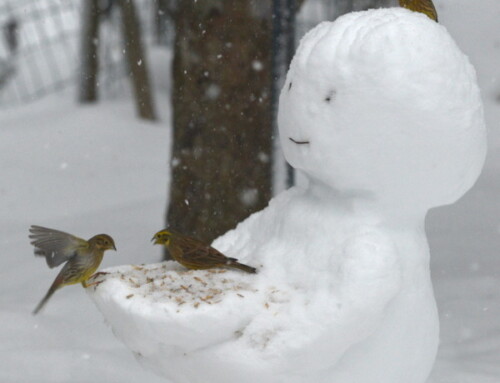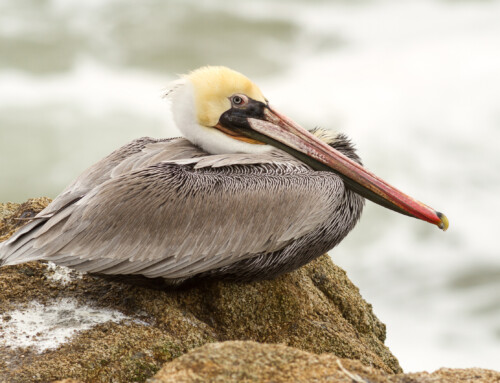Understanding non-breeding site use by Piping Plovers
LINKED PAPER
State uncertainty models and mark-resight models for understanding non-breeding site use by Piping Plovers. Cohen, J.B., Maddock, S.B., Bimbi, M.K., Golder, W.W., Ledee, O.E., Cuthbert, F.J., Catlin, D.H., Fraser, J.D., & Gratto-Trevor, C.L. 2017. IBIS. DOI: 10.1111/ibi.12546. VIEW
For a small camouflaged bird that few people have actually seen, the Piping Plover, Charadrius melodus, has garnered a huge amount of attention in North America. The reason is simple; their preferred nesting sites on open, sandy beaches are also some of the most attractive locations in America for summer homes and recreation, leading to the need for intensive measures to prevent their extinction. There are three breeding populations of this endemic shorebird, all of which were at critically low levels in the mid-1980’s but which are rallying due to annual efforts to protect nesting areas from the effects of anthropogenic activities and to reduce predation (see the population trend here). On the Atlantic Coast, approximately 1,800 Piping Plovers pairs nest from eastern Canada to North Carolina. In the Great Lakes region, the population has grown from only 12 pairs confined to the western lakes to over 70 pairs which are now starting to recolonize long-abandoned sites in the east. And in the Great Plains of the United States and the prairies of Canada, approximately 1,500 pairs nest on river sandbars, lakeshores, and in pothole wetlands.
On the Atlantic Coast, the population has not shown marked growth in recent years despite intensive management of breeding sites, leading to increased interest in conservation of non-breeding areas. Piping Plovers are medium-distance migrants, spending the non-breeding season along the southeastern Atlantic coast of the U.S., the Gulf of Mexico coasts of the U.S. and Mexico, and in the Caribbean (Elliot-Smith and Haig 2004). The three breeding populations mingle in the winter, with Atlantic Breeders and Great Lakes birds especially concentrated in the southeastern U.S. and Caribbean (Gratto-Trevor et al. 2012). Although their non-breeding habitat is rather similar in composition to coastal breeding areas, comparatively little research has been done on threats and population demographics outside of the breeding grounds. Human disturbance and habitat loss are thought to be primary factors affecting Piping Plovers during migration and the wintering period.

Ringing studies are a common tool for understanding the factors that affect population trends and habitat use of birds, and several projects have begun to examine Piping Plover survival and movement at non-breeding sites. Marks such as rings are critical for population studies, because they allow researchers to tease apart processes of interest (such as mortality) from observation error (overlooking birds that are alive and present). When studying population dynamics using rings, obtaining unbiased results depends on making the assumption that all birds that are captured and marked come from the same population. This seemingly simple requirement can be a big problem for studies of Piping Plovers and other shorebirds at non-breeding sites. The problem arises because in many locations there are groups of birds that stop for short periods of time during migration and other groups that arrive during the migration period but remain for an entire winter. These different groups of birds will vary in the rates at which they arrive at and leave a non-breeding site, and it is not possible to tell which group a particular bird belongs to until the migration period is over, greatly complicating efforts to study population changes during that period. We studied Piping Plovers at key non-breeding sites in South Carolina, which hosts birds from all three breeding populations with many from the critically endangered Great Lakes population. Our study took place in the non-breeding periods (July to March) of 2006/2007 and 2007/2008. We had two research goals:
- To estimate the demographic rates that drive population changes during the non-breeding period. These are the “entry probability” (the proportion of the total population that arrives at a given time) and “residence probability” (the proportion of birds that stay from one survey to the next). These two rates determine how quickly a non-breeding population changes over time, are useful for estimating how long migrating birds stay at a site, and can be sensitive to factors such as habitat alteration or predation that are of conservation interest.
- To estimate the abundance of Piping Plovers present in the winter (December to March) at our sites, using a repeatable method. Tracking abundance is another important tool for understanding threats and the effectiveness of management actions in the non-breeding period.
We surveyed all potential Piping Plover habitat every 7-10 days during the migration period and every month during winter, recording the identity of Piping Plovers carrying rings from the breeding grounds. We also tallied all unringed Piping Plovers observed during these surveys. By applying recently-developed statistical models known as “State Uncertainty” models, we were able to estimate entry and residency probabilities for birds that were stopping over and for birds that were staying the winter (Ruiz-Gutierrez et al. 2016). We estimated that over 50% of the Piping Plovers that ended up wintering at our sites arrived by the end of July, in the heart of the summer recreation season, and that 95% of them arrived by the end of October. Piping Plovers in our migrating populations stayed for an average of 35 days in the first year and 42 days in the second year. We estimated our wintering population size at 71±16 (standard error) Piping Plovers in the first year and 75±16 Piping Plovers in the second year.

Piping Plovers and similar shorebirds lend themselves well to ring resighting studies because they use open habitat and behave conspicuously, facilitating observations of the rings. The relative ease with which we could relocate ringed birds during our surveys allowed us to make fairly precise estimates of entry and residence probabilities from a small sample size even with complex statistical models. Our methods can help wildlife managers to track population trends of Piping Plovers over time, and understand the response of this endangered shorebird to habitat changes related to coastal development, human disturbance, and sea level rise.
References
Elliott-Smith, E. & Haig, S.M. 2004. Piping Plover (Charadrius melodus). The Birds of North America Online. Cornell Lab of Ornithology, Ithaca, NY. VIEW
Gratto-Trevor, C., Amirault-Langlais D., Catlin, D., Cuthbert, F., Fraser, J., Maddock, S., Roche, E. & Shaffer, F. 2012. Connectivity in Piping Plovers: Do breeding populations have distinct winter distributions? J. Wildl. Manage. 76: 348–355. VIEW
Ruiz-Gutierrez, V., Kendall, W.L., Saracco, J.F. & White, G.C. 2016. Overwintering strategies of migratory birds: a novel approach for estimating seasonal movement patterns of residents and transients. J. Applied Ecol. 53: 1035-1045. VIEW
Image credit
Featured image: Piping Plover, Charadrius melodus, in non-breeding plumage. The leg rings were applied during the breeding season, and indicate that the individual was banded in the Great Lakes as a chick © Sidney Maddock
Blog posts express the views of the individual author(s) and not those of the BOU.
If you want to write about your research in #theBOUblog, then please see here.





